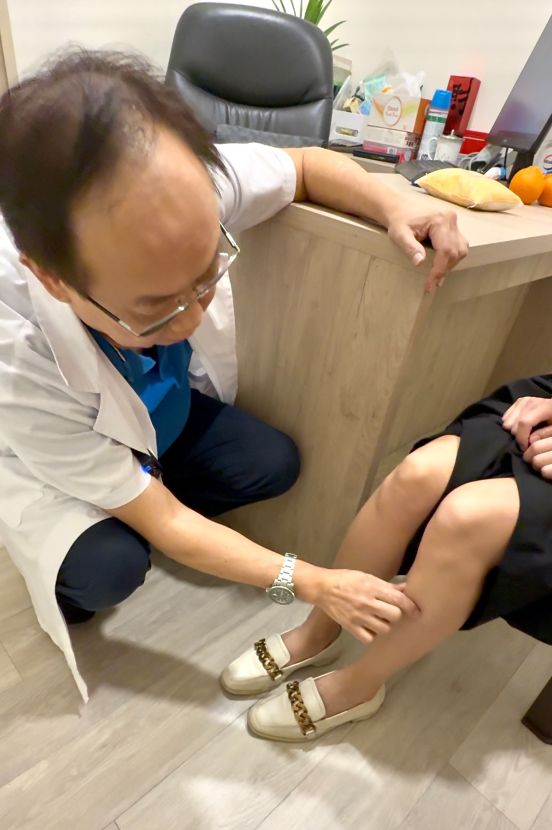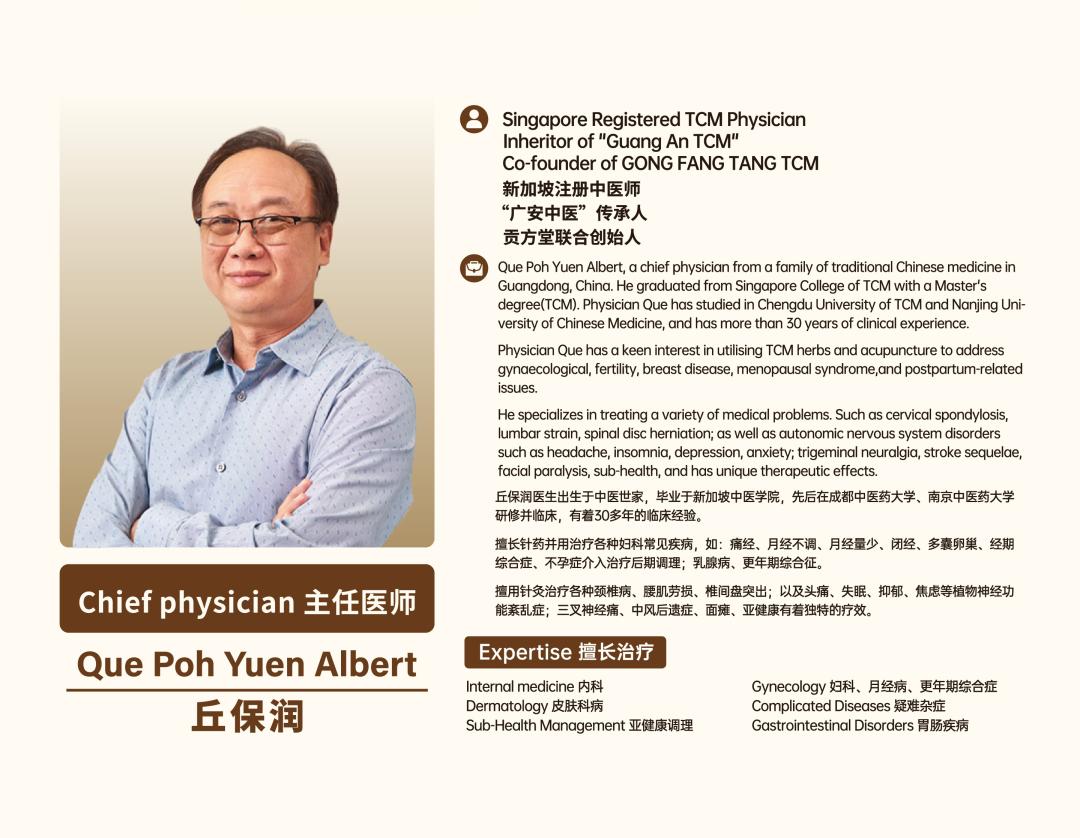There is a disease that predominantly affects adults, with elderly patients often experiencing more severe symptoms—and in rare cases, some individuals may suffer multiple recurrences: herpes zoster (shingles).
Many people find that even after the blisters have healed, they still experience persistent skin pain. This is primarily due to lingering toxins, Qi stagnation, blood stasis, and meridian blockages—where obstruction leads to pain. So, what should be done about it?

Herpes zoster is an acute blistering skin condition characterized by clusters of water-filled blisters that typically appear in a band-like pattern, resembling a fiery burn.
In Traditional Chinese Medicine (TCM), it falls under the categories of "snake-string sores" (蛇串疮) or "waist-surrounding fire cinnabar" (缠腰火丹). Its clinical features include red patches, blisters, or papulovesicles arranged in a string-like pattern along one side of a peripheral nerve distribution, accompanied by sharp localized pain.
Dr. Que Poh Yuen Albert, a TCM dermatology specialist at Singapore Gong Fang Tang TCM, explains that this condition often arises from emotional distress, dietary imbalances, or impaired spleen function leading to dampness accumulation. Over time, the dampness stagnates, transforms into heat, and combines with toxic pathogens, triggering the outbreak.
Since herpes zoster most commonly appears along the rib area—where the Liver Meridian runs—Liver Qi stagnation can generate internal fire. This "heat" scorches the skin, causing intense pain.
For postherpetic neuralgia, treatment should focus on activating blood circulation, resolving stasis, and soothing Liver Qi to alleviate symptoms.

Regarding soothing liver qi and regulating qi flow, there has been a classical formula since ancient times called Chai Hu Shu Gan San (Bupleurum Liver-Soothing Powder), originating from Zhang Jiebin's Jingyue Quanshu in the Ming Dynasty. This formula excels at regulating liver qi and promoting blood circulation to relieve pain.
As for nourishing blood and activating blood circulation, another formula evolved from Si Wu Tang (Four-Substance Decoction) and was recorded in Yizong Jinjian (Golden Mirror of Medicine). Named Tao Hong Si Wu Tang (Peach Kernel and Carthamus Four-Substance Decoction), it is a classic prescription for nourishing blood and promoting blood flow.
[Modifications]
For restlessness and insomnia: add Suan Zao Ren (Spine Date Seed) and Zhen Zhu Mu (Mother of Pearl).
For elderly or weak patients: add Huang Qi (Astragalus) and Dang Shen (Codonopsis).
This syndrome pattern is commonly seen in the later stages of the disease, where prolonged illness leads to stagnant qi and blood, causing meridian blockage. The formula primarily uses strong blood-activating herbs like Tao Ren (Peach Kernel) and Hong Hua (Safflower) to break blood stasis. Shu Di Huang (Prepared Rehmannia) and Dang Gui (Angelica Sinensis) nourish the liver and blood, while Chi Shao (Red Peony Root) enhances blood nourishment. Chuan Xiong (Ligusticum) promotes qi and blood circulation, helping to remove stasis and generate new blood. Additional herbs like Ru Xiang (Frankincense), Mo Yao (Myrrh), Yan Hu Suo (Corydalis), and Chuan Lian Zi (Toosendan Fruit) help regulate qi, unblock meridians, and relieve pain. Gan Cao (Licorice) harmonizes all the ingredients.
The combination of Chai Hu Shu Gan San and Tao Hong Si Wu Tang, with appropriate modifications, can effectively treat postherpetic neuralgia.
In the formula, Chai Hu (Bupleurum) and Xiang Fu (Cyperus) work as a perfect "dynamic duo"—like two capable guards dedicated to soothing liver qi and regulating qi flow. However, simply regulating qi is not enough; the pain caused by qi and blood stagnation must also be addressed.
Therefore, the formula includes blood-activating and stasis-resolving herbs such as Tao Ren (Peach Kernel), Hong Hua (Safflower), Chuan Xiong (Ligusticum), Zhi Ru Xiang (Processed Frankincense), and Zhi Mo Yao (Processed Myrrh).
These herbs act like road maintenance workers, clearing the "blocked pathways"—the meridians—that have been clogged due to qi and blood stagnation.
Once the meridians are unblocked, qi and blood can flow smoothly, eliminating stubborn pain.

Medical Case Record
Patient: Dou, Male, 74 years old
Chief Complaint:
Red, clustered herpes on the left back and rib area with burning pain for over 4 days. Additional symptoms include bitter taste in the mouth, dark urine, poor sleep, a red tongue with yellow greasy coating, and a wiry-rapid pulse.
Western Medicine Diagnosis: Herpes Zoster (Shingles)
Traditional Chinese Medicine Diagnosis:
She Chuan Chuang (Snake-String Sores) – Pattern of Damp-Heat with Qi Stagnation and Blood Stasis
Treatment Principle:
Clear Liver Fire
Drain Dampness and Resolve Toxins
Activate Blood Circulation and Unblock Collaterals
Prescription:
Modified Chai Hu Shu Gan San (Bupleurum Liver-Soothing Powder) combined with Tao Hong Si Wu Tang (Peach Kernel & Carthamus Four-Substance Decoction)
Dosage & Administration:
3 doses, 1 dose per day, decocted in water and taken warm in the morning, noon, and evening.
Lifestyle Advice:
Avoid raw, cold, spicy, and overly heating foods.
Protect from wind-cold, keep warm, and prevent overexertion.
Treatment Outcome:
After taking 2 doses, the patient's family reported reduced pain, validating the TCM principle: "Using toxins to combat toxins; when there is free flow, there is no pain."
